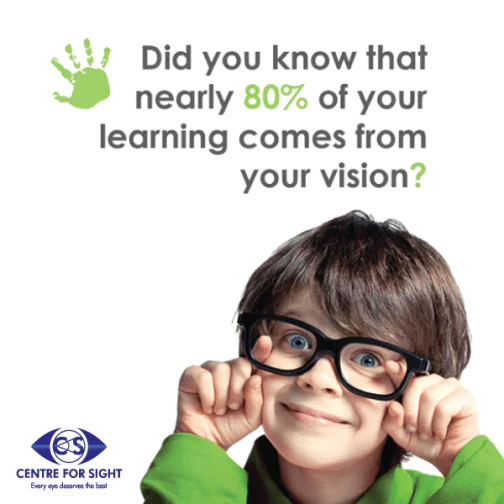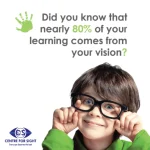Squint is a misalignment of the two eyes. In this condition, both the eyes do not look in the same direction at the same time. Squints are common and affect around one in 20 children. They usually develop before five years of age, but can appear later too. When a squint is present, the eyes point in different directions and the brain is no longer able to process the separate images and produce a three-dimensional perception. Whilst one eye looks forward to focus on an object, the other eye turns either inward, outward, upward or downward. Most squints occur in young children. Sometimes when a child has a squint, the vision in the eye which squints may be weaker than the vision in the eye without the squint. How it affects? First we need to understand how eyes work to know how squint affects the working of the same. Eyes work together as a pair. When you look at an object, both the eyes will be pointing in the same direction and focusing at the same point. The brain combines the slightly different images from each eye to give a 3-D picture of the world. The brain will receive similar but slightly different pictures from each eye which it joins together to allow you to have binocular vision. This slight difference allows you to have depth perception which helps you to judge how far away things are. The movement of each eye is controlled by six muscles which pull the eye in specific directions. The muscles for one eye also work and coordinate with the muscles from the other eye. This allows both the eyes to coordinate their movement together. A squint can develop when the eye muscles do not work in a balanced way and the eyes do not move together correctly causing the vision related issues in an individual. How is it treated? Treatment of a child’s squint can be done in a number of ways and often more than one treatment or a combination of treatments may be needed to get the best result for the child’s vision. Mostly squint treatment is on-going and it usually involves regular visits and examinations at the eye clinic for a number of years. Treatment aims to give good vision in each eye, as well as correction of the eye alignment. The child might need to see an orthoptist and/or an ophthalmologist. Eye tests can determine if the child needs glasses. Some of the most common ways that squint can be treated include glasses, occlusion therapy (patching), eye exercises, injections and surgery. Visit the paediatric eye specialist and determine what is suitable in your case and get treatment accordingly. *The views expressed here are solely those of the author in his private capacity and do not in any way represent the views of Centre for Sight.





